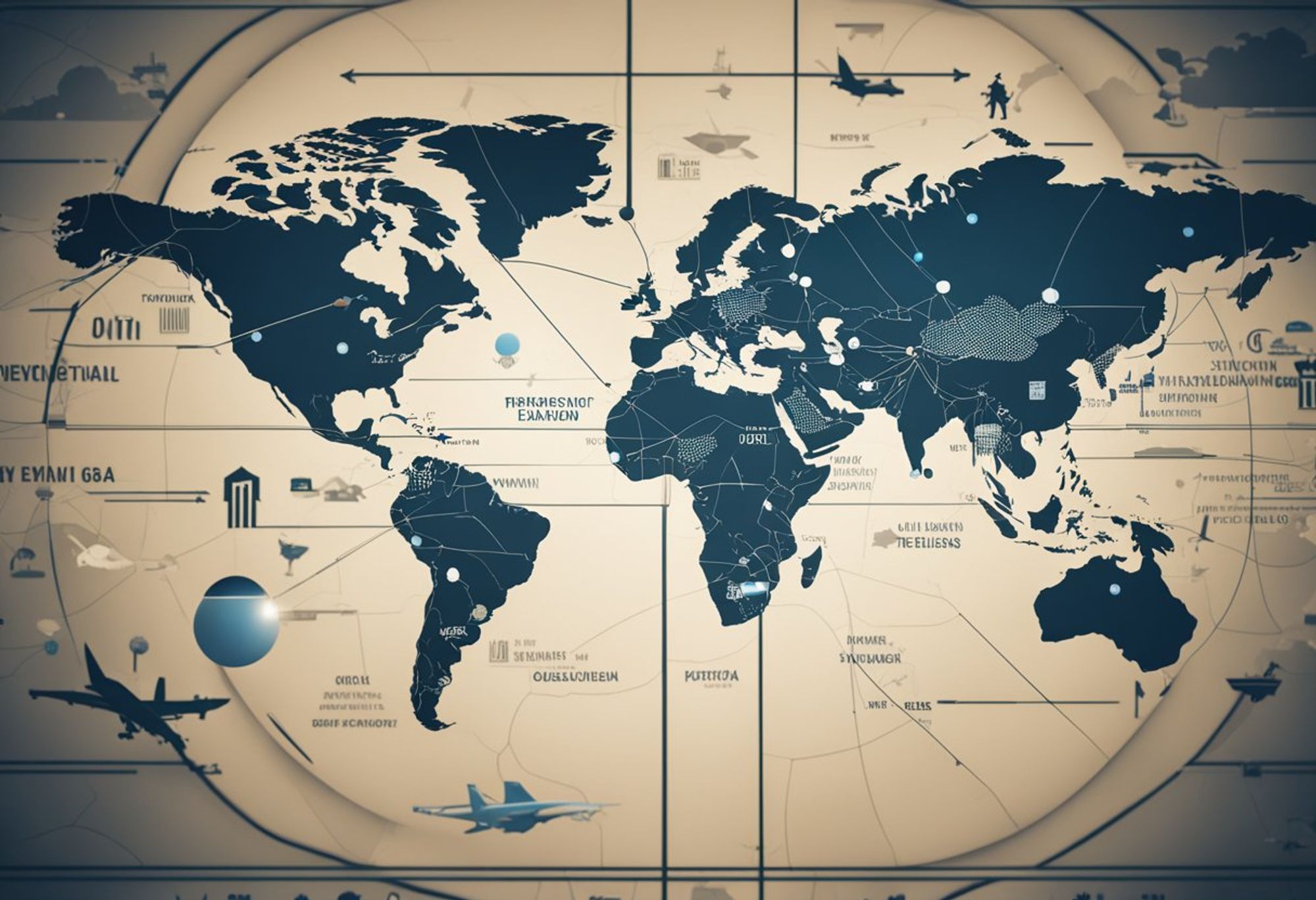Global Sourcing Challenges Guide 2024: Navigating the Complexities of International Procurement
Global sourcing is a crucial aspect of modern-day businesses that allows companies to access a wide range of products and services from different parts of the world. However, global sourcing also presents a unique set of challenges that companies must overcome to remain competitive and successful. In 2024, businesses are facing a host of new challenges in global sourcing that require strategic planning and innovative solutions to mitigate risks and maximize opportunities.
Understanding the dynamics of global sourcing is essential to navigate the challenges and opportunities that come with it. Companies must be aware of the geopolitical, economic, and social factors that impact global sourcing decisions. For instance, the ongoing tension between major powers, potential regional conflicts, and unpredictable sanctions regimes can disrupt supply chains and inflate costs. Trade wars and protectionist policies continue to create uncertainties and increase border friction, hindering smooth global sourcing.
To address these challenges, companies must adopt strategic approaches to global sourcing that balance cost and resilience. A global sourcing framework guides strategic decision-making, considering the traditional reliance on a primary supplier in China and various alternatives. Companies should define and prioritize initiatives for implementing the new strategy, accounting for lead times and interdependencies. By doing so, businesses can optimize their global sourcing operations and maintain a competitive edge in the market.
Key Takeaways
-
Global sourcing presents unique challenges for businesses in 2024 that require strategic planning and innovative solutions to mitigate risks and maximize opportunities.
-
Understanding the dynamics of global sourcing is essential to navigate the challenges and opportunities that come with it.
-
Strategic approaches to global sourcing that balance cost and resilience can help companies optimize their operations and maintain a competitive edge in the market.
Understanding Global Sourcing
Global sourcing is the process of procuring goods and services from suppliers located in different countries around the world. It is a strategic approach that companies use to reduce costs, access new markets, and find new suppliers. Global sourcing is becoming increasingly popular among companies of all sizes, as it offers a range of benefits that can help drive growth and profitability.

Current Landscape of Global Sourcing
The landscape of global sourcing is constantly evolving, driven by factors such as technological advancements, regulatory changes, and geopolitical events. In recent years, the rise of digital technologies has transformed the way companies approach global sourcing, making it easier and more efficient to identify and engage with suppliers around the world.
However, global sourcing also comes with its own set of challenges. One of the biggest challenges is geopolitical instability, which can disrupt supply chains and increase costs. Other challenges include cultural differences, regulatory issues, and currency fluctuations.
Key Players in Global Sourcing
The key players in global sourcing include both suppliers and buyers. Suppliers are typically located in countries with lower labor costs, such as China, India, and Vietnam. Buyers, on the other hand, are located in countries with higher labor costs, such as the United States, Europe, and Japan.
To successfully navigate the global sourcing landscape, companies need to have a deep understanding of the markets in which they operate, as well as the suppliers and buyers they work with. They also need to have a clear strategy in place that takes into account the various challenges and risks associated with global sourcing.
Overall, global sourcing can be a powerful tool for companies looking to expand their reach and reduce costs. However, it requires careful planning and execution to be successful, and companies need to be prepared to navigate the challenges that come with operating in a global marketplace.
Challenges in Global Sourcing
Global sourcing has become an essential part of modern business operations, enabling companies to reduce costs, access new markets, and find new suppliers. However, it also comes with a range of challenges that companies must navigate to ensure success. This section will explore some of the most significant challenges in global sourcing in 2024.
Navigating Tariffs and Trade Policies
Navigating tariffs and trade policies is a significant challenge in global sourcing. In recent years, there has been a rise in protectionist policies, which has led to an increase in tariffs and trade barriers. This can make it difficult for companies to find cost-effective suppliers and can increase the cost of goods. Companies must stay up-to-date with the latest trade policies and tariffs to ensure they are sourcing goods from the most cost-effective suppliers.
Managing Supply Chain Risks
Managing supply chain risks is another significant challenge in global sourcing. The lingering effects of the pandemic and climate change exacerbate supply chain vulnerabilities. Events like natural disasters, cyberattacks, and labor shortages can cause sudden disruptions and shortages. Companies must have a robust risk management strategy in place to mitigate these risks and ensure continuity of supply.

Overcoming Cultural and Communication Barriers
Overcoming cultural and communication barriers is also a significant challenge in global sourcing. Companies must navigate cultural differences when working with suppliers from different countries. This can include different business practices, communication styles, and attitudes towards time and deadlines. Companies must also ensure effective communication with suppliers to avoid misunderstandings and delays.
In conclusion, global sourcing presents many challenges that companies must navigate to ensure success. Companies must stay up-to-date with the latest trade policies and tariffs, have a robust risk management strategy in place, and overcome cultural and communication barriers to ensure they are sourcing goods from the most cost-effective suppliers.
Strategic Approaches to Global Sourcing
As global sourcing continues to be an essential component of supply chain management, companies must adopt strategic approaches to overcome the challenges that come with it. Two key strategic approaches are discussed below.
Building Resilient Sourcing Strategies
The COVID-19 pandemic has highlighted the importance of building resilient sourcing strategies. Companies need to diversify their supplier base and reduce reliance on a single supplier or country. This approach helps to mitigate supply chain disruptions caused by unforeseen events such as natural disasters, political instability, and pandemics.
To build resilient sourcing strategies, companies should conduct a thorough risk assessment of their supply chain. This assessment should identify potential risks and their impact on the supply chain. Companies should also develop contingency plans to manage risks and ensure business continuity.
Leveraging Technology for Efficient Sourcing
Advancements in technology have transformed the way companies source goods and services globally. Companies can leverage technology to improve efficiency, reduce costs, and enhance visibility into their supply chain.
One way to leverage technology is by implementing a digital procurement platform. This platform streamlines the sourcing process, from identifying potential suppliers to negotiating contracts and managing supplier relationships. It also provides real-time data and analytics, enabling companies to make informed decisions and optimize their sourcing strategy.
Another way to leverage technology is by using artificial intelligence (AI) and machine learning (ML) to automate repetitive tasks and improve decision-making. AI and ML can analyze vast amounts of data to identify patterns and trends, enabling companies to make data-driven decisions.
In conclusion, building resilient sourcing strategies and leveraging technology are key strategic approaches that companies should adopt to overcome the challenges of global sourcing in 2024 and beyond.
Frequently Asked Questions
What are the primary risks associated with global supply chains in 2024?
Global supply chains face a variety of risks in 2024. The increased reliance on digital platforms and automation in procurement exposes companies to cybersecurity risks like data breaches and cyberattacks. Furthermore, the ongoing geopolitical tensions and trade wars between major economies can lead to supply chain disruptions and increased costs. Natural disasters, climate change, and pandemics can also cause significant disruptions to global supply chains.
How do currency fluctuations impact global sourcing strategies?
Currency fluctuations can have a significant impact on global sourcing strategies. When the value of a currency changes, it can affect the cost of goods and services sourced from other countries. Companies that source materials or products from countries with volatile currencies may find it difficult to maintain stable pricing. To mitigate this risk, companies may use hedging strategies or diversify their sourcing to reduce their exposure to currency fluctuations.

What strategies are companies adopting to mitigate the disadvantages of global sourcing?
Companies are adopting several strategies to mitigate the disadvantages of global sourcing. One approach is to diversify their sourcing to reduce their reliance on any single supplier or country. Another strategy is to establish long-term relationships with suppliers to improve communication and collaboration. Companies are also investing in technology to improve supply chain visibility and reduce the risk of disruptions. Additionally, companies are focusing on sustainability and ethical sourcing to reduce the risk of reputational damage.
How is technology shaping the future of international procurement?
Technology is playing an increasingly important role in international procurement. Companies are using advanced analytics and artificial intelligence to improve supply chain visibility, reduce costs, and identify opportunities for innovation. The use of blockchain technology is also gaining popularity as a way to improve transparency and traceability in the supply chain. Finally, companies are using digital platforms to connect with suppliers and streamline procurement processes.
What are the legal and compliance challenges faced in global sourcing?
Legal and compliance challenges are a major concern for companies engaged in global sourcing. Companies must comply with a variety of regulations related to labor, environmental, and social standards. Failure to comply with these regulations can result in fines, legal action, and reputational damage. Additionally, companies must navigate complex legal systems and cultural differences when working with suppliers in other countries.
What are the key factors in maintaining quality control in a global sourcing environment?
Maintaining quality control in a global sourcing environment requires a comprehensive approach. Companies must establish clear quality standards and communicate them effectively to suppliers. They must also conduct regular audits and inspections to ensure that suppliers are meeting these standards. Finally, companies must have effective processes in place to manage quality issues and resolve them quickly.
Navigate the Global Sourcing Landscape: Access Buyamia’s Comprehensive Guide to Overcoming Challenges in 2024!
Stay ahead of the curve with insights, strategies, and solutions tailored to tackle the latest global sourcing challenges. From supply chain disruptions to regulatory changes, empower your sourcing endeavors with expert advice. Click here to equip yourself with the knowledge needed to thrive in today’s dynamic marketplace, courtesy of Buyamia.com
